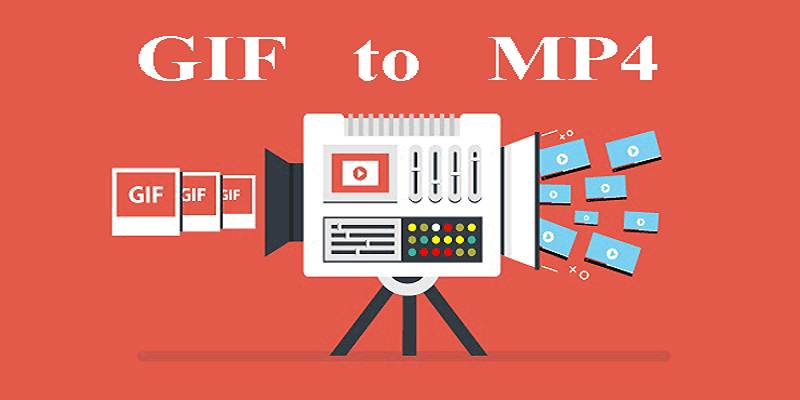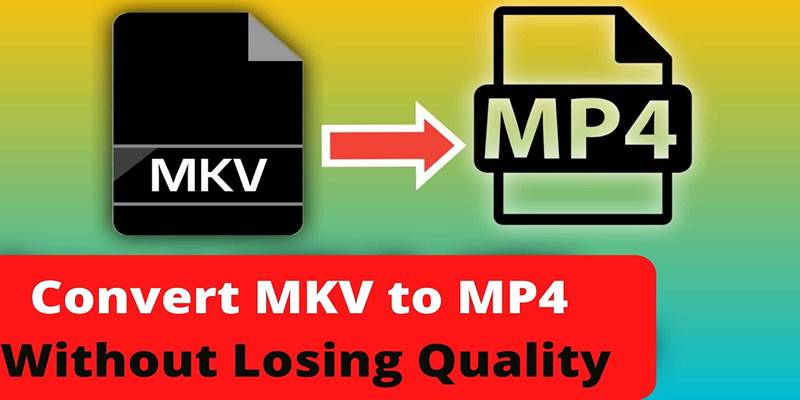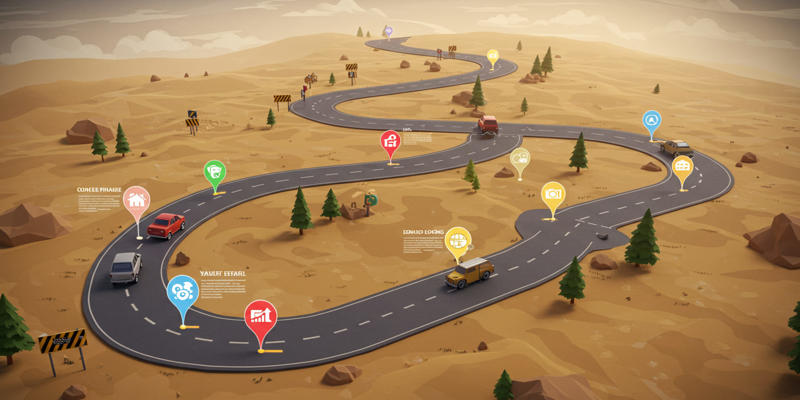Product roadmaps
The product roadmap provides more than a timeline as it presents strategic guidelines determining how a product will develop over time. A product roadmap becomes necessary for all product development stages to link stakeholders with development work while steering projects toward good results. This complete report explains the product roadmap basics, including its purpose and construction process, to show you how you can develop a path that leads your product successfully.
What is a Product Roadmap? Defining the Purpose and Scope
 A product roadmap shows people the main steps to developing a product from its strategy. It explains what the product needs to achieve and every aspect of its development plan. A product roadmap discusses product directions before any technical details or schedules need planning and execution.
A product roadmap shows people the main steps to developing a product from its strategy. It explains what the product needs to achieve and every aspect of its development plan. A product roadmap discusses product directions before any technical details or schedules need planning and execution.
Key characteristics of a product roadmap:
- Strategic: Aligned with the overall business strategy and product vision.
- Charts or diagrams make the product roadmap simple for everyone to understand and share information.
- The system keeps evolving to fit what market demands, customer thoughts, and business directions now require.
- Different product specialists including product management, engineering, design, promotion, and sales personnel, work together to develop this document.
- Communicative: Shares the product's direction with internal teams, external partners, and customers.
Why is a Product Roadmap Important? The Benefits Unveiled
When product teams create detailed development plans, they gain different advantages.
- The product roadmap keeps every participant focused on what the product needs to achieve.
- The product strategy gets conveyed effectively to audience groups when you use this approach.
- Our roadmap system shows stakeholders what to focus on next, given the features and projects that will most advance our strategy.
- Planning: Facilitates long-term planning and resource allocation.
- The product framework helps teams decide on successful product development strategies.
- Making company activities public creates trust with all people who have a stake in the organization.
- The team stays on target with their major tasks and objectives.
Key Elements of a Product Roadmap
A standard product roadmap contains these parts:
- The product vision presents the main target and future path of the project in simple terms.
- The product needs performable targets that align with SMART principles.
- The product vision benefits from these plans to reach its intended outcomes.
- Our team will create individual product elements and functional updates for release.
- Our schedule shows when each product feature will reach its version state and which dates each milestone will occur.
- Our product performance will depend on selected Key Performance Indicators
Types of Product Roadmaps
 Product roadmaps exist in many types to match specific business requirements and viewer roles.
Product roadmaps exist in many types to match specific business requirements and viewer roles.
- A Strategic Roadmap helps organizations set product goals and objectives that they need to achieve for multiple years ahead.
- The Technology Roadmap shows which technology upgrades and network adjustments the product strategy needs.
- The Release Roadmap displays upcoming versions of new product functionality over several monthly schedules.
- These plans explain all product development steps to the teams within the company.
- The external audience will benefit from a basic product outline that shows its future development direction.
Creating a Product Roadmap: A Step-by-Step Guide
- State your product vision along with its strategic milestones first. Tell us what specific challenge you need to resolve. You need to clarify what benefits your product offers to users.
- Employ Different Stakeholders: Invite feedback from customers throughout each team, including sales, marketing, and engineering professionals. Listen to them about their essential business needs and pain areas.
- Use MoSCoW or the RICE system to rank the importance of product projects and features.
- Pick a Suitable Template: Find a roadmap template that matches your requirements and target audience. You can find several free or paid road mapping templates on the Internet.
- Put your chosen features and projects into the roadmap framework by mentioning their timelines and performance results.
- Broadcast the product roadmap to everyone involved and plainly explain what the product strategy requires.
- Keep the roadmap current by reviewing it often with changes needed when market conditions shift, plus feedback reaches us and our enterprise objectives.
Tools for Creating and Managing Product Roadmaps
Tool | Description | Key Features |
|---|---|---|
Productboard | A product management platform that helps teams define, prioritize, and communicate their product strategy. | Roadmap visualization, feature prioritization, customer feedback management, and integration with other tools. |
Aha! | A product roadmap software that allows teams to create, share, and track their product plans. | Roadmap visualization, strategic planning, feature prioritization, release management, and integration with other tools. |
Jira | A project management tool that can also be used for creating and managing product roadmaps. | Task management, workflow automation, issue tracking, roadmap visualization, integration with other tools. |
Trello | A simple and visual project management tool that can be used for basic product roadmapping. | Kanban boards, list management, task assignment, collaboration features, roadmap visualization (with Power-Ups). |
Asana | A work management platform that helps teams plan, organize, and track their work, including product roadmaps. | Task management, project tracking, collaboration features, timeline view, roadmap visualization, and integration with other tools. |
Google Sheets/Slides | Basic, free tools that can be used to create simple product roadmaps. | Customizable templates, collaboration features, and basic roadmap visualization require more manual effort than dedicated roadmap tools. |
Best Practices for Effective Product Roadmapping
Include only basic information to prevent your roadmap from becoming overwhelming. Focus on the key projects that lead to business success.
Show all stakeholders your new product timeline and accept their ideas. The plan needs to match actual demands and deadlines.
Ready to modify the plan when current market situations or customer feedback changes.
Tell stakeholders what is happening with the product and adjust the development plan as needed.
Highlight the results people want to achieve instead of fixing individual job steps and component descriptions.
Display graphics and illustration tools to help people understand the roadmap design better.
Common Mistakes to Avoid
The product roadmap is a strategic plan that should not become a detailed project plan.
A product roadmap needs valid customer feedback to succeed in its development.
When you establish work deadlines that are beyond reach it will make your team unhappy and exhausted.
When teams do not properly spread roadmap information, they naturally get mixed up.
A product roadmap needs ongoing updates because conditions and circumstances change frequently.
The Future of Product Roadmapping
Product road mapping will evolve through important industry patterns that will determine its future direction.
- The technology will handle routine processes while identifying the market direction and placing feature importance.
- Product road mapping tools will start offering team collaboration features so colleagues can work live at the same time.
- Product development teams will connect their plans to data analytics services to receive business results and market feedback.
- Product development plans will prioritize how well they make customers happy.
Conclusion
A product roadmap works as the main tool to join team members and development teams with customers' goals. Your product roadmap should drive product development while delivering value to customers by using known method rules and guidelines. Using product roadmapping tools lets you change your product plan to reach business targets effectively.
On this page
What is a Product Roadmap? Defining the Purpose and Scope Key characteristics of a product roadmap: Why is a Product Roadmap Important? The Benefits Unveiled Key Elements of a Product Roadmap Types of Product Roadmaps Creating a Product Roadmap: A Step-by-Step Guide Tools for Creating and Managing Product Roadmaps Best Practices for Effective Product Roadmapping Common Mistakes to Avoid The Future of Product Roadmapping ConclusionRelated Articles

4 Trello Calendar Views to Help Visualize Your Projects Effectively

Quick Guide: Change GIFs to MP4 and Keep High Clarity and Speed

Best 5 File Encryption Tools to Keep Personal Data Safe and Private

Discover the 4 Best Journal Apps for Organizing Your Thoughts

Best Way to Convert MKV to MP4 for Smooth Playback and Streaming

TickTick vs. Todoist: Which To-Do List App Should You Choose

The Art of Editing: Building Engaging Video Montages

Handwriting to Text: Use These Free OCR Tools for Note Conversion

The Flowtime technique: A complete guide

SkedPal vs. Motion: A Detailed Comparison to Find Your Perfect Scheduling App

Product roadmaps

 knacksnews
knacksnews